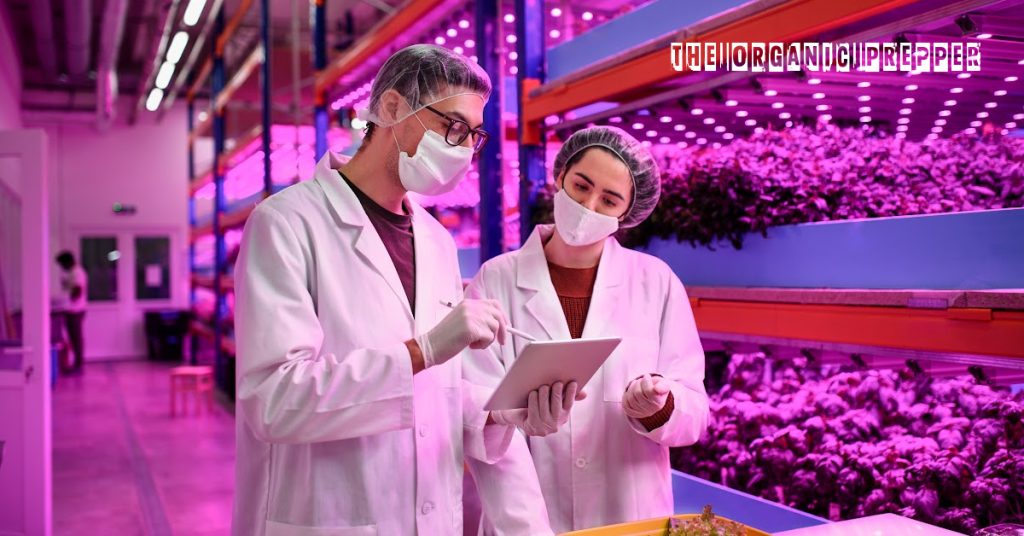by Daisy Luther, The Organic Prepper:

In September 2022, President Biden released an Executive Order on Advancing Biotechnology. Then, In March 2023, he released a document entitled Bold Goals for U.S. Biotechnology and Biomanufacturing, outlining specific areas of focus in this bioengineering manifesto.
The goals in these documents sound very nice. They’re all about using new technology to fight climate change, increase the food supply, cure diseases, and strengthen national security by increasing domestic manufacturing.
TRUTH LIVES on at https://sgtreport.tv/
Is that really the goal?
However, I believe that these goals will be used to grab land from existing farmers and ranchers. Farmers and ranchers need to turn a profit to pay taxes on their land; as actions are taken to achieve these goals all but the largest will be driven out of business. This will occur via a combination of oppressive regulations in the name of climate change, and lawsuits regarding patent-protected crops.
This probably sounds a little crazy, but the crazy people have been getting a lot right lately. Let’s look at these documents and see what they actually contain. Then we’ll look at what this actually means for people involved in food production and some of the precedents that have already been set.
Here’s what’s in the executive order.
The EO promotes bioengineered solutions for everything. There will be a push to replace petroleum-based plastics with biomanufactured products. So, for example, developing more plant-based compostable bags, rather than those old plastic ones at the grocery store.
The EO also addresses retaining intellectual rights to everything developed and emphasizes domestic manufacturing. Supply chain problems have impacted everyone; these documents claim that switching to supposedly environmentally friendly bioengineered products will solve those problems. This document tries to make promoting biotechnology companies into a national security issue.
What are these Bold Goals?
The Bold Goals document addresses more specific actions and lays down goals through 2040. It actually has five sections: (1) Climate change solutions, (2) food and agriculture innovation, (3) supply chain resilience, (4) human health, and (5) cross-cutting advances. These are all areas in which the federal government believes bioengineering holds a great deal of promise. But I’ll focus on the food and agriculture innovation section because I think that one most relates to who owns farmland.
Goals within the agricultural section cover a variety of topics. Many of them make sense; they relate to reducing waste and improving breeding strategies. However, many of the other goals sound like power grabs that have been discussed before.
By 2030, the stated goal of this document is to reduce agriculture-related methane emissions by 30%, and greenhouse gas emissions by 50%. 2030 is only seven years away; this document has some interesting high-tech-sounding solutions, but realistically, the only way to reduce methane emissions so dramatically will be to shrink herd sizes. Considering that our beef cattle herd is down to its lowest level in over 60 years, I’d say we’re well on our way there.
Within 5 years, American farmers are supposed to reduce agriculture-related nitrogen emissions. The document does not give a specific amount, but does nitrogen reduction sound familiar? If you’re a regular reader, it should. That’s been the big excuse given for seizing Dutch farms.
So, what happens next?
Goals such as these don’t ban meat outright, but they make it more expensive. They also make it harder for farmers and ranchers to pay their own bills. As they are driven out of business, it becomes easier for people like Bill Gates to buy up that agricultural land.
Another goal addresses reducing food waste, which is indeed admirable, but all discussions revolve around high-tech engineering solutions. Why do they not address teaching home economics in middle and high schools, to encourage young people to plan their meals and use their food more wisely?
Public authorities seem to think that trying to teach the general population about taking better care of their health and resources is a waste of time. But they believe in the power of marketing when it comes to convincing people to eat all kinds of garbage.
Beef or bugs?
The first section of Goal 2.1 is to “make novel foods more palatable, affordable, easier to prepare, and more easily incorporated into manufactured foods.”
We’ve talked about eating bugs on this website before The Bold Goals document doesn’t address eating bugs directly, but it does refer repeatedly to “novel food sources” and “new protein sources.” I would bet a bison burger that these are just euphemisms for insects.
They also want to promote “alternative protein sources,” such as those that are plant-derived, the result of fermented processes, or cell-cultured. So, along with the push toward insects, they want to push people toward the consumption of highly-processed fake meat items, as well.
This is also something we’ve talked about on this website. Government and industry have been pushing fake meat for a while now, and people just don’t want it. But they’re not taking “no” for an answer; they intend to keep pushing it.
Marketing is everything.
Goal 2.2 wants to address “nutrient density” in foods. They want to do this with more genetic engineering (of course), expanding the “range of organisms that can be used for nutritional purposes” (probably more insect- and algae-eating), and research into traditional medicinal foods.
Read More @ TheOrganicPrepper.ca



